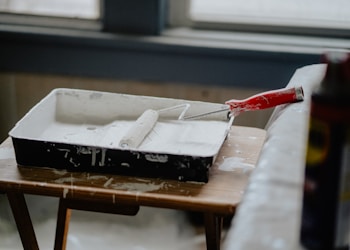Although sometimes unpleasant and never exactly fun, relocating can have a positive outcome in your life. Undoubtedly, relocating homes takes a lot of effort, time, and energy. Besides the physical struggle of moving all your possessions, leaving a home you’ve known for years can also be emotionally taxing.
It doesn’t matter if you’re moving right across the road or shifting to a bigger city like New York or Olympia; the process can quickly become stressful. Besides the actual packing, you also have to worry about hiring movers and ensuring nothing gets damaged during the transit. And so, a lot can go wrong during the entire relocation process.
Fortunately, you’re not the first person to relocate home, and most definitely not the last. There are plenty of tried-and-tested tricks that can make your move easy and hassle-free. However, no one-size-fits-all guide can cater to every individual’s needs.
Below, we have outlined the top 10 general tips that can make relocating easy for anyone. You might want to tweak some of these to meet your specific concerns, but you’ll find them highly beneficial in most cases.
Get rid of stuff
Moving is the perfect time to get rid of stuff you no longer need. Packing all your items into bags and boxes can quickly become tiring, so it’s easier to declutter while going through your things. Begin with a closet purge. If it’s out of style, no longer fits, or is something you haven’t worn in over a year—get rid of it. Next, pack up old furniture or electronics you no longer use. If any of these items hold sentimental value, but you don’t want them in your new home, consider renting extra space. A quick Google search can be quite handy. For example, if you’re relocating close to Washington State’s capital city, search for ‘Olympia storage units‘ to find suitable places to rent. Repeat the same for any other city/area you’re moving to.
Cutting back on your things may seem difficult. However, no one will be more grateful for this tip than yourself when you start unpacking your new home without any clutter.
Pack a bag of essentials
Packing a bag of all your essentials is necessary when planning a moving day. Ensure you keep items you’ll need access to during your move or right after arriving at your new home. It’s a good idea to pack this bag ahead of time and set it aside before the chaos of the moving day begins. Some things you may want to add to your essentials bag are:
- medicines
- basic toiletries
- chargers
- a change of clothes
- important documents
Make early bookings
If you plan on hiring movers, renting supplies, cleaners, or painters to work on your new home, it’s best to make your bookings early. This tip is especially useful during the peak-moving season because waiting until the last minute can quickly cost you much more than you anticipated. In some cases, you may not even be able to get movers or workers in time if you make your booking too late.
Start packing in advance
As overwhelming as packing can be, it can worsen if you pack at the last minute. You don’t have to seal everything in boxes all at once. Instead, start by packing off-season items like winter clothes if you’re moving in the summer. You can also pack other things like books, house décor, and fine china early on. The rest of the items you may pack when you have a more definite timeline of when the moving day will be.
Create a checklist
A checklist can come in extremely handy when packing and relocating your valuables. Don’t put off writing by trying to commit items to memory. You can also draft a checklist that includes a timeline to handle events as they unfold. Some of the tasks you can add to your list are:
- scheduling the movers
- ordering moving supplies
- contacting utility companies to shut off services
- making arrangements for cleaning/painting
Use color packing labels
Use multi-colored packing labels to mark your boxes by assigning a specific color to each room. Alternatively, you can also use colored masking tape and label the box’s contents on its side. In the new home, you can mark each room’s entrance with its designated color label to help movers know which item belongs where. This strategy can save you precious time and keep you from guessing where you stored a particular thing.
Invest in quality boxes
Although scoring some free boxes from your local corner store may seem tempting, saving a couple of dollars may not be worth it. Since grocery stores usually have used boxes, their quality may get compromised due to extensive use. Buying durable quality moving boxes can save you the trouble of damaging your valuables while in transit.
It’s also helpful to buy more boxes than you think you’ll need. There is nothing worse than running out of packing boxes just before moving day when you already have many other things to worry about.
Take pictures
It can be tricky to pack any equipment or electronic devices you’ll have to reassemble in your new home. However, taking a few pictures can come in handy to remember how to set up the wires and other accessories to your system. You can also snap photos of bedroom furniture as a guide to putting it together once you’ve relocated.
If you’re hiring a moving company, take photos of precious or fragile belongings in case they get damaged or lost during transit. The pictures you take will be valuable when you file an insurance claim.
Put your linens to use
You can use towels, linens, and other soft fabrics to pack fragile and valuable items around the house. Use socks and bedsheets for maximum padding of perfume bottles, glasses, lamps, and vases. You can also pack sharp objects in the kitchen and bathroom like knives, scissors, forks, and razors in padded clothing. Doing this prevents items from getting damaged and makes efficient use of available space.
Pack hazardous items separately
Some things can prove dangerous during the transit process, so you must carefully consider what not to pack. When moving to the new house, you must carefully mark garage tools, detergents, fire extinguishers, or any chemicals in separate boxes. Don’t keep these items with the rest of your things, and try to dispose of them if they’re no longer needed safely.
Conclusion
Although packing and relocating to a new home may seem daunting at first, it’s nothing some careful planning can’t take care of. The primary purpose of all these “hacks” is to do a little at a time to make it easy for yourself when moving day arrives. Implement these tips above, and perhaps you’ll be surprised to learn that relocating wasn’t as bad as you expected.
















